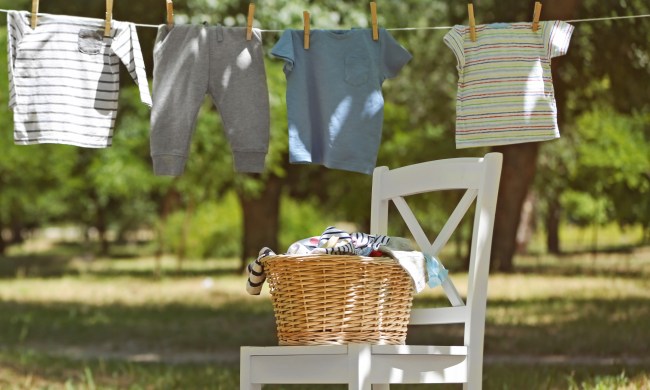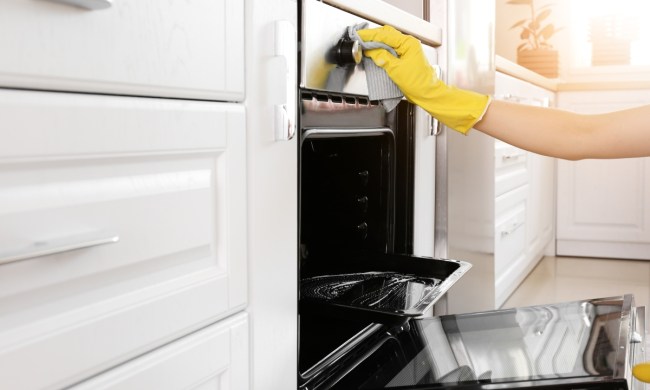
We put a lot of effort into our wardrobe, so it makes sense that we'd want to ensure our clothes look and feel great. That's why proper care in your laundry room is the key to keeping your fabrics looking bright, clean, and new. But when it comes time to use bleach in laundry, many people have trouble doing it right and end up with bleach stains or otherwise ruined clothes. But learning how to use bleach in laundry isn't all that complicated, so we're here to help you figure it out.
- Common issues with using bleach in laundry
- 1. Read labels to prevent damaged fabrics
- 2. Use the right type of bleach
- 3. Spot test the fabric before washing the whole garment
- 4. Load whites lightly in the washing machine
- 5. Add bleach properly
- Whites: How do you use bleach in a washing machine?
- Colors: How to wash colored clothes with bleach
- How much bleach should you use in a load?
- How to use bleach to remove stains
- Can you mix bleach and laundry detergent?
Using bleach on whites has been a common practice for generations, particularly when it comes to tasks like washing white sheets or towels, but it can be daunting to use it on your clothes if you've never done it before. With so many advancements in the cleaning product industry and so many types of bleach available, where do you start?

Common issues with using bleach in laundry
If you’ve got reservations about using bleach, you’re not alone, and you’re not wrong to be wary. These are the most common problems that can occur when bleach is used improperly on clothes:
- Bleach stains. If you’ve ever mistakenly gotten bleach on colored fabric, you’re familiar with that horrid, bright bleach spot.
- Yellowing fabric. Even on whites, overusing bleach can turn that pure, bright fabric into a dingy yellow color.
- Ineffective bleach performance. If used improperly, bleach can simply fail at removing those tough stains from your white fabrics
The good news is, we're going to review some helpful tips on how to use bleach in laundry and not ruin your wardrobe in the process.

1. Read labels to prevent damaged fabrics
Bleach isn’t for every fabric. Some fabrics that you should never use bleach on are wool, silk, leather, spandex, and certain synthetic fabrics, because bleach can damage them. Your clothing item’s tag should either read “bleach-safe” or it should have a triangle symbol indicating whether bleach can be used on the fabric.
If the triangle symbol has three lines through it, this indicates that only non-chlorine bleach should be used. If the triangle is solid or has an “X” through it, this indicates that it’s not safe to use bleach on the fabric.

2. Use the right type of bleach
- Chlorine bleach is the most common type of bleach, and it both whitens and disinfects, but it should only be used on all-white fabrics.
- Oxygen bleach is a non-chlorine bleach and it’s safe to use on colored fabrics to brighten and remove stains, but it does not disinfect your clothes.
- Hydrogen peroxide is safe to use on both whites and colors, and it whitens, brightens, disinfects, and deodorizes fabrics. It’s considered a more eco-friendly cleaning product than other types of bleaches, but it’s a milder bleach and won’t be as effective as chlorine or oxygen bleaches.

3. Spot test the fabric before washing the whole garment
Even if the care tag on your clothing item says that it’s bleach-safe, it’s always a good idea to do a spot test to make sure the type of bleach you’re using is appropriate. Follow these steps to spot test the fabric.
Step 1: Mix 2 tablespoons of bleach product with 1/4 cup of water.
Step 2: Dip a Q-tip in the solution and dab it on your clothing item in an unassuming area. An inside hem works well for this test since the area won’t be seen when the item is worn.
Step 3: Wait for 1 minute to see if the bleach solution discolors or stains the fabric.
Step 4: If no discoloration occurs, proceed with washing the garment using your bleach product.

4. Load whites lightly in the washing machine
An overloaded washing machine of whites can bleach fabrics unevenly or it can make bleach less effective at whitening and removing stains. Make sure you’re loading your washing machine lightly so the bleach can do its job perfectly.
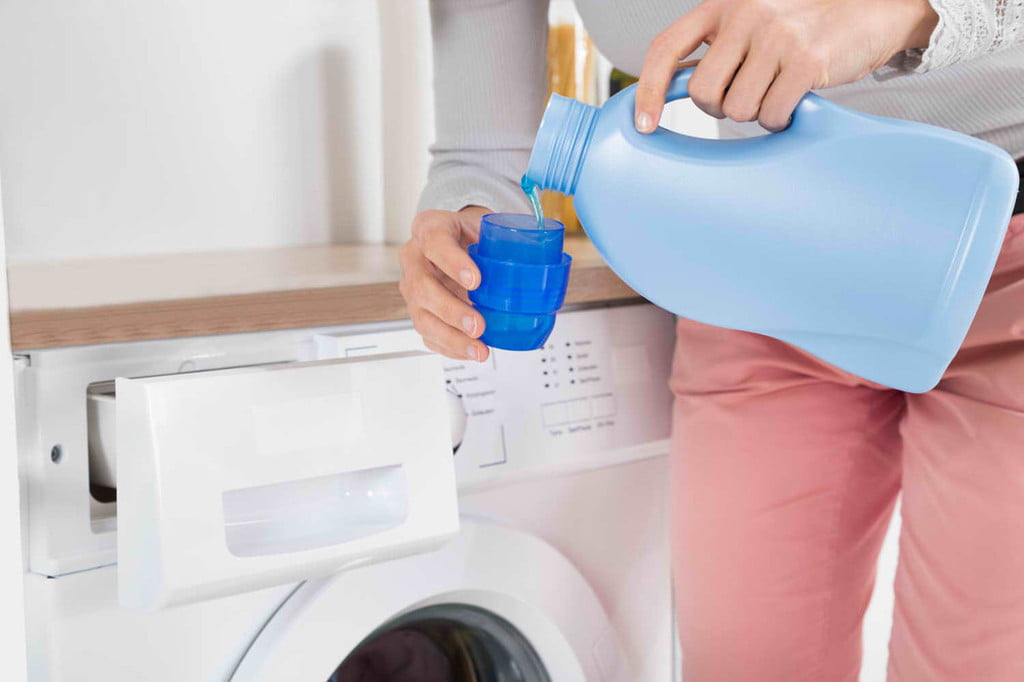
5. Add bleach properly
You should never just pour bleach onto clothing. That's how bleach stains and discoloration occurs. Instead, make sure you're using your bleach properly on your laundry by properly diluting it. If you have a bleach dispenser on your waching machine, just add the bleach to the dispenser and the machine will dilute the bleach for you. If you don't, however, you'll have to dilute the bleach in the washing machine yourself.
Generally, the proper procedure when diluting bleach for laundry is to fill the washer and add a 1/4 cup of bleach per one gallon of water. Then, once the two are mixed, you can add your fabrics and wash as normal.

Whites: How do you use bleach in a washing machine?
Washing your whites with chlorine bleach may seem like a no-brainer process, but there are a few specific steps you should take in order to get the most out of your bleach and prevent fabric damage.
Step 1: If you don't have an appropriate dispenser on your washing machine, you'll need to dilute the chlorine bleach with the proper ration. Use hot water to increase the effectiveness of the bleach on your whites.
Step 2: Add your favorite laundry detergent and wait for 5 minutes to let the solution mix before adding your clothing to the machine.
Step 3: Perform an extra rinse cycle to rid the clothes of any lingering bleach odor.
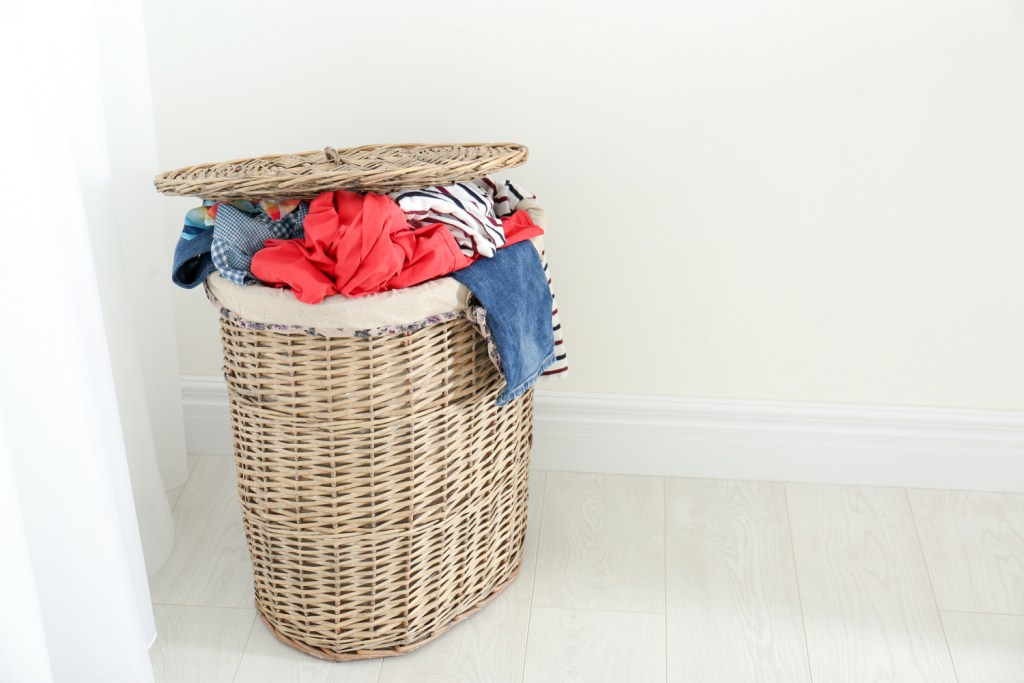
Colors: How to wash colored clothes with bleach
For brightening or removing stains from colored clothes, you’ll use the same bleaching process as when you wash white fabrics, with just a couple of exceptions. Use oxygen bleach or hydrogen peroxide to avoid bleach stains. Also, you should always use cold or warm water (or whatever water temperature is specified on the clothing label) when washing colors. Hot water tends to make dyes in colored clothing bleed or fade.
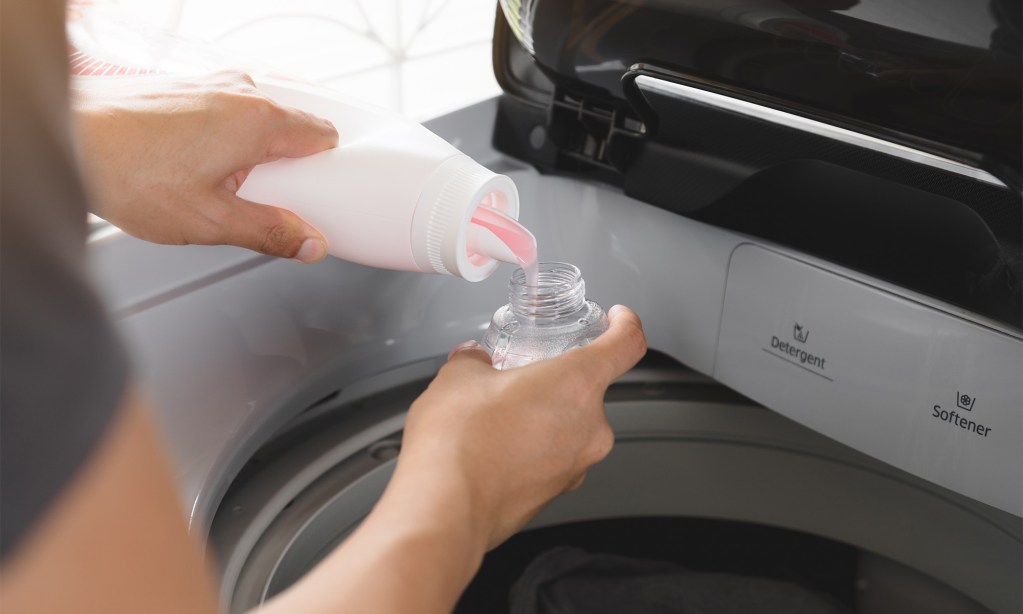
How much bleach should you use in a load?
The amount of bleach you should use in your laundry load depends on a few factors, such as the size of the load and the type of bleach you have.
For a regular-sized load of laundry, a general guideline is to use about half a cup of bleach. However, it's always a good idea to check the instructions on the bleach bottle, as different brands may have specific recommendations.
If you're dealing with a larger load, you can increase the amount slightly, but avoid going overboard as too much bleach can be harmful to your clothes and even your washing machine.

How to use bleach to remove stains
If you need to remove stains from your clothing, you can use the same process for both whites and colors.
Step 1: In a bucket or in the sink, create a solution of 1 gallon of warm water and 1/4 cup of bleach.
Step 2: Submerge stained clothes in the solution and allow them to soak up to 8 hours.
Step 3: Remove clothes from the sink and run them through a normal wash cycle in your washing machine.
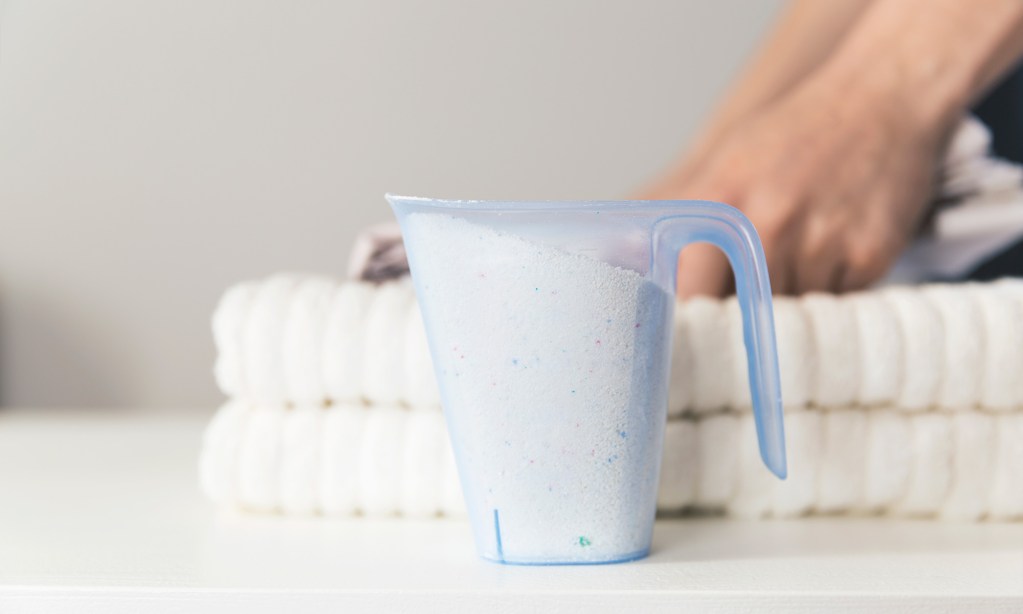
Can you mix bleach and laundry detergent?
Yes, you can generally mix bleach with laundry detergent without adverse effects. It's crucial to avoid mixing bleach with substances like acids, ammonia, or certain cleaners due to the potential release of toxic gases. For example, you should never mix bleach with vinegar or laundry detergents that contain vinegar. However, standard laundry detergent is typically safe to mix with bleach.
Laundry detergent contains surfactants and other compounds designed to help lift dirt and stains from clothing, complementing bleach's whitening and disinfecting properties. However, it's essential to follow manufacturer instructions when mixing bleach with laundry detergent.
In order to look your best, you want your clothes to be crisp, bright, and stain-free. Using bleach in your laundry may give you pause, but with the right bleach product and bleaching process, your clothes will be protected from bleach stains and discoloration. Even better, they’ll look their best for longer.

